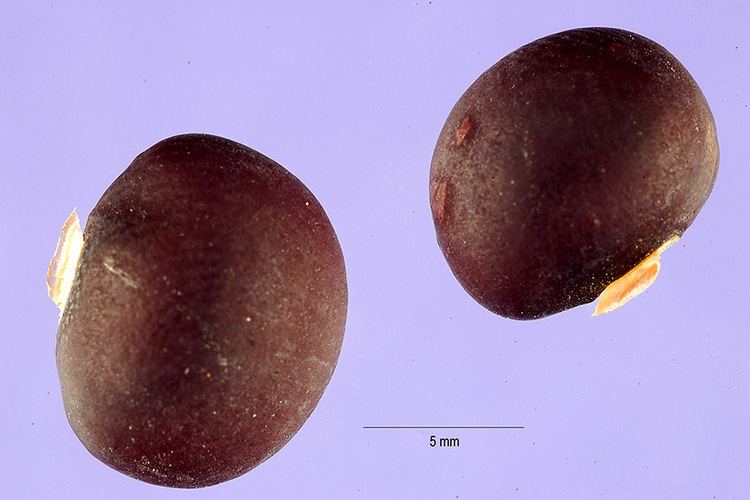Scientific name Pachyrhizus Rank Genus | Subtribe Glycininae Higher classification Faboideae | |
Lower classifications Jícama, Pachyrhizus ahipa | ||
Ahipa pachyrhizus ahipa sprouted ninja gardening episode 20
Pachyrhizus is a small genus of five or six species of tropical and subtropical plants growing from large, often edible taproots.
Contents
Jícama

The jícama /ˈhɪkəmə/ or yam bean (P. erosus) is a vine widely grown for its large (10-15 cm diameter and up to 20 kg weight), spherical or elongated taproot. After removal of the thick, fibrous brown skin, the white flesh of the root can be eaten cooked or raw. Crisp, moist, and slightly sweet, the flesh draws comparison with that of the apple. The plant produces seeds that are comparable to lima beans, and that are sometimes eaten when young in places where the jicama is native. The mature seeds contain high levels of rotenone, a chemical used as an insecticide and pesticide. The remainder of the jícama plant is very poisonous.
Goitenyo

Goiteño, nupe, jacatupe or Amazonian yam bean (Pachyrhizus tuberosus) is an annual vine that is characterized by a wrapped and herbaceous stem and a ligneous base. It has white and lilac flowers, pods from 10 to 20 cm in length and beans with a high protein content (32%). Each plant has two or more tubercles from 15 to 25 cm in length that are succulent, sweet and rich in starch and protein (9%). They are consumed both raw and cooked. The leaves (20 to 24% protein) and pods are also edible. This plant prospers in acid soils in South America's tropical rainforests. It is cultivated by the native peoples of the Amazonia, who practice shifting horticulture.
Ahipa

The ahipa, ajipa, or Andean yam bean (Pachyrhizus ahipa) is very similar to the jicama and goitenyo in characteristics and uses. Unlike the jícama, it is not a vine and it grows up 2000 m above sea level in the highest Bolivian mountains. The root is smaller and more elongated. It is little known outside of the Andes, where it is mostly grown for personal or local consumption. In the 19th century, British scientists introduced ahipa to the West Indies, where it is also enjoyed by the residents of those islands.
All three above Pachyrhizus species are popular cultivated varieties, mainly jicama or P. erosus, which is common in the USA as imported jicama, while another cultivar, P. palmatilobus, is less agreeable in taste.
